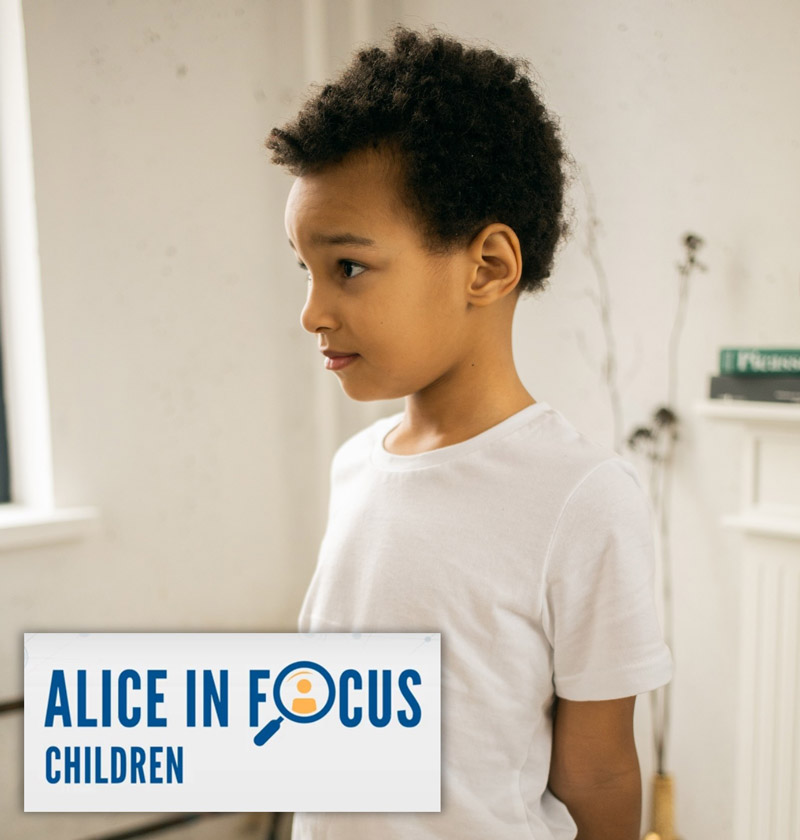
Nearly one million Michigan children live in households that can’t afford basic necessities, with stark differences based on race and ethnicity, according to new research released by United Way.
Based on 2019 data, the ALICE In Focus: Children Report found 44% of kids statewide fall below the ALICE Threshold for Financial Survival, with 17% living in poverty and 27% living above the Federal Poverty Line but not in financially stable households. The results for children of color were even more troubling: 71% of Black children and 58% of Hispanic children in Michigan live below the ALICE Threshold, compared to 36% of White children.
Nationwide, nearly half (49%) of all children live below the ALICE Threshold.
ALICE stands for Asset Limited, Income Constrained, Employed—households that earn income but struggle to afford housing, childcare, food, transportation, health care and other essentials.
The findings come from the latest analysis of the ALICE population, which makes up 40% of all Michigan households, and the first one spotlighting children. The new report comes from the Michigan Association of United Ways (MAUW) and research partner United For ALICE. Consumers Energy Foundation funded this and four comprehensive ALICE reports released by MAUW since 2014, most recently last year.
“Our new ALICE In Focus series will help us further understand how we can best address today’s critical issues surrounding ALICE children,” said Mike Larson, President and CEO of MAUW.
The report noted that many ALICE families earn too much to qualify for public assistance despite struggling to meet basic needs. Among the resources that ALICE children lack:
- Stable housing – 52% of children in renter households below the ALICE Threshold were paying more than 35% of household income on rent in 2019.
- Education – 37% of preschool-age children below the ALICE Threshold were enrolled in preschool, compared to 58% of kids above the ALICE Threshold. More than 8,050 Michigan children ages 15-17 didn’t attend school in 2019; more than half of them lived in ALICE households.
- Health insurance – 4% of children in families below the ALICE Threshold didn’t have insurance coverage. Of those who did, 61% relied on public insurance. Of children above the ALICE Threshold, 88% had private insurance.
- Home internet – Nearly 300,000 children below the ALICE Threshold in Michigan did not have access to high-speed internet at home in 2019, which affected their access to education, learning support programs and work.
Among other key findings, 23% of Michigan children in households with two adults in the labor force were still below the ALICE Threshold in 2019, meaning having working parents or guardians isn’t a guarantee of financial stability. Also, children with a disability were more likely to live in households below the ALICE Threshold (62%) than those without a disability (43%).
United Way of South Central Michigan, along with other United Ways and key partners, is committed to serving ALICE families by collaborating on effective, equitable programs and advocating for public policies that improve the health, education and financial stability for all people.
Click here to download the ALICE In Focus fact sheet with more Michigan results. An online dashboard is available here. You can also watch a short video on the report. Future reports in the series will look at individuals with disabilities and those who are veterans. ALICE In Focus is a national research series using the U.S. Census Bureau’s American Community Survey Public Use Microdata Samples (PUMS) with ALICE measures applied, including the Household Survival Budget and the ALICE Threshold. National results and study methodology can be found at UnitedForALICE.org.
